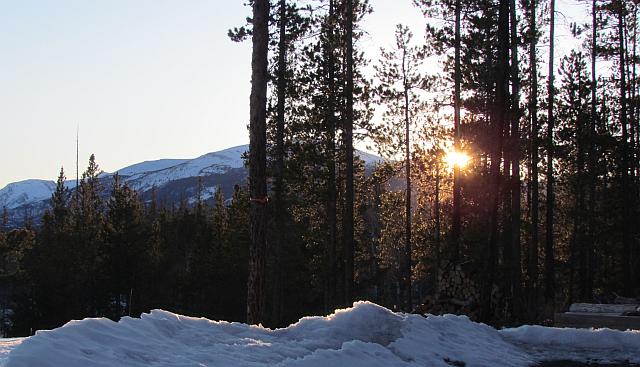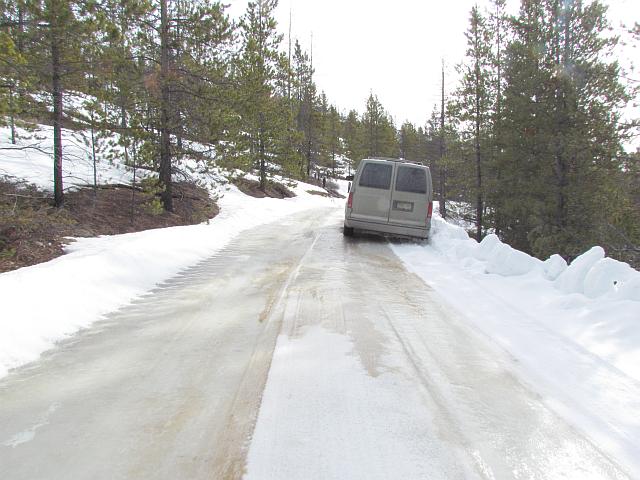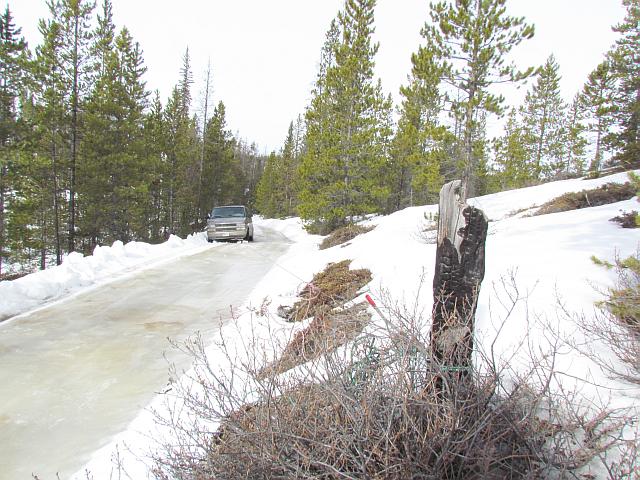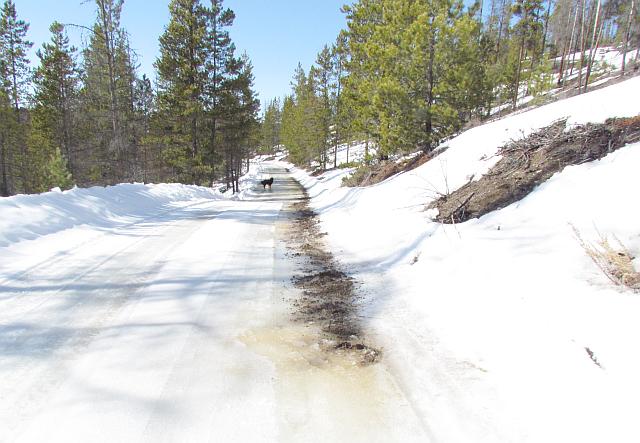The equinox almost past me by as I was busy with other things. We are now back into fabulous weather mode. Still cold in the mornings – minus 15C – but above freezing in the afternoon.
The sun now rises far enough round to light Finger Peak in the mornings.

And it completely clears Nogwhon when it sets.

But this weather is bringing some problems. On my road, not far from Highway 20, is a very long stretch of glare ice. This has never happened before, but the ground is so saturated from the overload of rain last summer and the previous fall, that water is oozing and flowing down the road. The cold mornings mean that I am presented with a skating rink. It is at its worst late morning, when the temperature has risen to about -2C. The first time I drove it like that I swivelled right round but managed to do a multiple point turn to get back on track. The second time I was not so lucky and slid into the snowbank left by the plough. It is not easy to see on the photo but I am at the bottom of a small rise and totally stuck. It was fortunate that the snowbank was there or I would have slid right off the road.
Even with creepers on my boots, I could not stand on the ice without hanging on to the van. I had a bucket of ashes with me but they provided no traction whatsoever. I had a shovel but the small bits of bare ground above the road were frozen solid.

Next, out came the trusty come-along.

The stump looks rotten but it was firmly anchored in the frozen ground. Extricating the van was a tedious process. The rope was a cheap one and very stretchy so a lot of the cranking was wasted energy. I would get it as tight as I could, then start the van. It would move a few inches until the tension was off the rope then spin out again. It must have taken well over an hour to get up a few yards of rise, but when the road levelled out I could drive again.
Today the temperature rose to +6C and there was a lot of strong sunshine. I drove down to the ice. Now the top couple of inches of dirt on the bank was sloppy and thawing, and I shovelled a track of mud all the way down the edge of the ice.

As long as there is not too much seepage from the bank, the mud should provide traction the next time I want to drive out, which is in two days’ time. The dark earth should also melt a track down into the ice. I shovelled more dirt into a couple of buckets, which are very heavy as the dirt is wet. I can’t leave them in the van overnight or they will freeze so have had to lug them inside. I hope I remember to put them in the van when I drive out on Monday.
